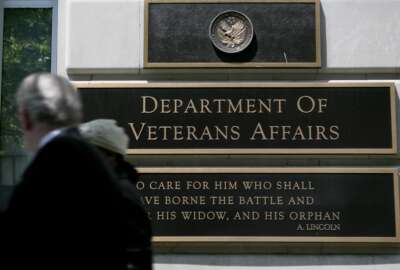
VA’s confidence about appeals modernization timeline soothes congressional skepticism
Trouble with implementing changes to the GI Bill have left lawmakers skeptical when it comes to new systems at the VA, but appeals modernization efforts are playing...
Trouble with implementing changes to the GI Bill has left lawmakers skeptical when it comes to new systems at the Department of Veterans Affairs. But the VA’s appeals modernization efforts are playing out far more smoothly, according to its stakeholders.
“Appeals modernization is a good news story for veterans and VA,” James Byrne, acting deputy secretary of the VA, said during a Dec. 12 hearing of the House Veterans Affairs Committee. “We collaborated on a realistic, effective, flexible plan, and we’ve been executing against that plan and making steady progress. Veterans can expect a modernized appeals process on time in February 2019.”
RAMP opened to all veterans
Byrne painted a rosy picture of the modernization efforts. The Veterans Benefits Administration exceeded its production targets for FY 2018 by 12.5 percent, resolving more than 168,000 appeals, 62 percent more than in FY 2017. It did this by opening its new Rapid Appeals Modernization Program (RAMP) to all veterans, though the Board of Veterans Appeals did not begin adjudicating RAMP cases until October.
David McLenachen, director of the Appeals Management Office at VBA, told the committee that RAMP helped the VBA deliver 34,000 decisions, each in an average of 120 days. The time frame for such decisions before the RAMP program was three to seven years.
Before VA opened the RAMP program to all veterans though, it did undergo limited invitation-only test cases, which helped VA work out the bugs. House VA Committee Chairman Phil Roe (R-Tenn.) attributed much of the system’s success to this process.

“I think the idea that you phased in RAMP allowed you to see through any hiccups in there without having all of it dumped in your lap at one time, I think that was a very smart way to do it, to begin the way you did,” Roe said. “And then, if there were problems, they weren’t major problems affecting hundreds of thousands of people. They affected a few hundred, or a few people maybe, and you could see those. I think there’s a lesson to be learned there.
Lloyd Thrower, VA’s deputy chief information officer and acting account manager for the benefits portfolio at the Office of Information and Technology, outlined a number of other factors that went into the success of this effort. For one thing, the systems in question already had a fully-funded team familiar with the code in place before the legislation authorizing the modernization was passed. For another, the level of requirements was relatively simple.
“I think that this was an excellent example of where the organization fully implemented its agile development principles, where we had incremental deliverables scheduled throughout the process,” Thrower said. “First we had very tight integration with the business from day one. So there was no air gap between us in terms of understanding requirements and what was needed. We laid out a schedule early on of capabilities that needed to be done in May, in September and in December … on the [veterans benefits management systems] side. On the Caseflow side we were doing incremental waves of development from the last two years that have all fed into the successful implementation of this.”
Veterans still likely to seek cumbersome hearings
The program isn’t perfect, of course. Elizabeth Curda, director of the Education, Workforce, and Income Security Team at the Government Accountability Office, said the GAO had made four recommendations that remain open or only partially addressed. In addition, VA still has 117 actions in its plan to implement before the full appeals modernization system goes live in February. Roe suggested delaying the roll-out by a month to avoid a situation similar to the Forever GI Bill, but Byrne said he was confident that VA could handle the issues by February.
Related Stories

VA says it’s ready for appeals modernization, but IT upgrades have fallen behind
Ultimately, the only criticism lawmakers had that the VA couldn’t immediately address was the lack of metrics for success. Rep. Beto O’Rourke (D-Texas), who has also been involved in oversight of the GI Bill implementation, noted that this is a pervading issue at VA. But aside from that, lawmakers seemed satisfied with the answers, and comforted that they did not have another modernization debacle.
“This is actually a very different scenario than the GI Bill. As of this past weekend, we have deployed the solution for all of the ports of VBMS that are required to implement this bill,” Thrower said. “It is deployed and ready in the field. The Caseflow work has been incrementally delivered over the last nine months. There are maybe two things that I know of that they’re finishing up over the next month, and those I have very good confidence about.”
Copyright © 2025 Federal News Network. All rights reserved. This website is not intended for users located within the European Economic Area.
Daisy Thornton is Federal News Network’s digital managing editor. In addition to her editing responsibilities, she covers federal management, workforce and technology issues. She is also the commentary editor; email her your letters to the editor and pitches for contributed bylines.
Follow @dthorntonWFED




